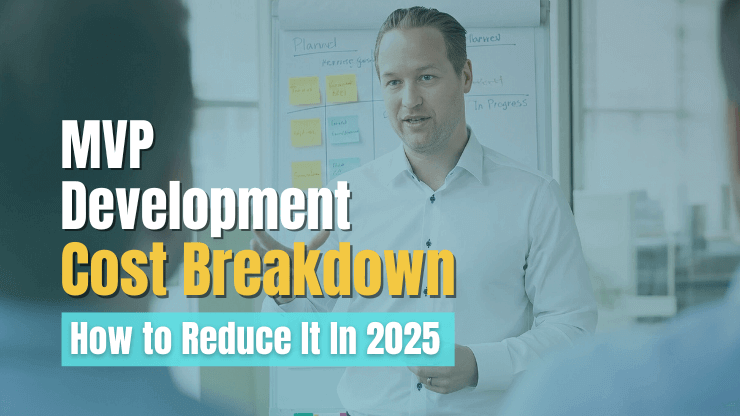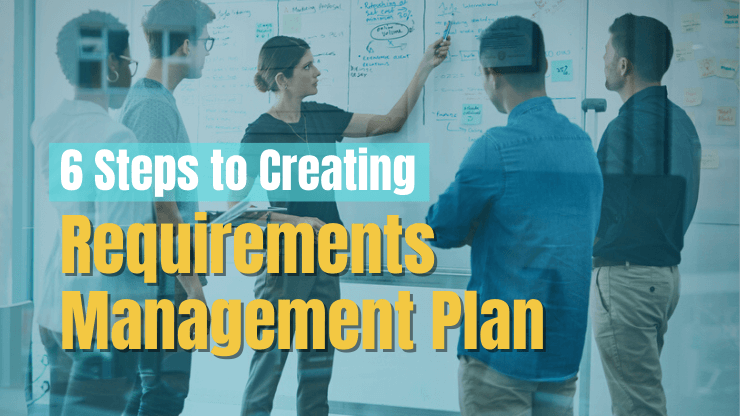As a founder, you're driven by a vision and fleeting market opportunities. The faster you deliver your product to real users, the quicker you can gather feedback, validate your idea, and make necessary improvements.
With 20 years of experience in building MVPs, I’ll break down MVP development costs in 2025 and demonstrate proven tactics that can help you save up to 40% on an MVP development without sacrificing quality or speed.
Let’s dive in!
MVP Development Costs in 2025
The cost of an MVP isn't a one-size-fits-all figure. It's a spectrum, largely dictated by complexity, feature set, and the development approach:
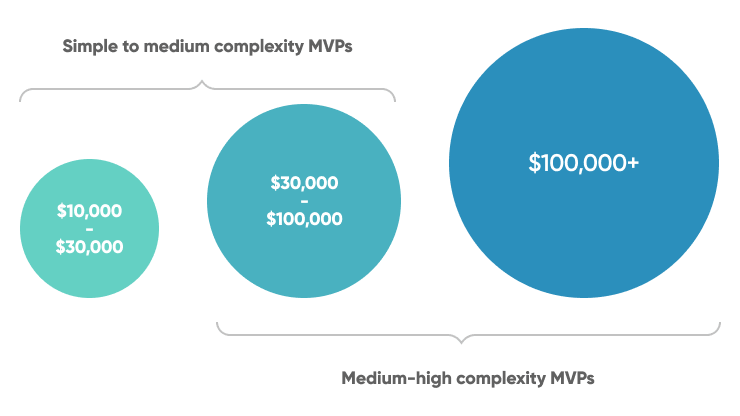
- Simple MVPs ($10,000 - $30,000): These MVPs usually focus on a single core problem with a limited set of features. Think basic user registration/login, a primary function (e.g., creating a specific type of content, a simple matching algorithm), minimal third-party integrations (perhaps basic analytics or a payment gateway for a single product), and a clean, template-based UI. They often target a single platform (web or mobile). AI integration, if present, via existing APIs for specific tasks.
- Medium Complexity MVPs ($30,000 - $100,000): These involve multiple key features, more sophisticated user flows, integrations with several third-party services (e.g., CRM, advanced analytics), an admin panel, and potentially some level of user-generated content or interaction. They might support responsive web and one mobile platform. AI features (like a recommendation engine or chatbot) could be part of this tier.
- High Complexity MVPs ($100,000+): These are feature-rich MVPs, often requiring complex backend logic, advanced security considerations, many third-party integrations, bespoke AI development, or significant AI feature integration, and a highly polished, custom design.
Remember, these are benchmark ranges. Lean prototypes can dip below the floor, while builds in regulated markets often break through the ceiling. The specifics of your idea will ultimately determine where you land on this spectrum and how to budget for it.
MVP Development Cost Drivers
MVP development costs obey simple laws: more features add mass, complex technology creates friction, and bigger teams increase gravity. Understanding these forces will let you speak the same language as your MVP development team and make trade-offs with confidence.
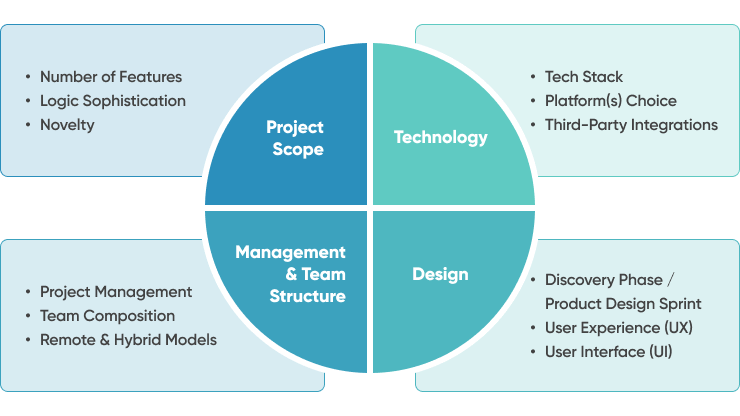
Project Scope
Scope is your MVP’s center of gravity — the wider it spreads, the heavier everything else becomes.
- Number of Features: More features = more time, testing, and risk.
- Logic Sophistication: A simple CRUD (Create, Read, Update, Delete) application is far less complex than an app requiring intricate algorithms, real-time data processing, or machine learning capabilities.
- Novelty: Building something entirely new without existing parallels often requires more research, experimentation, and iteration, therefore driving MVP costs up.
Technology
Your tech stack is the friction layer: choose wisely and you glide; choose poorly and you grind.
- Tech Stack: Choosing common, well-supported technologies (e.g., Node.js or FastAPI) can be more cost-effective due to a larger talent pool and third-party libraries. Niche technologies might have fewer available developers, driving up hiring costs and potentially development time.
- Platform(s) Choice: Developing native apps for both iOS and Android is typically the most expensive. A web app is often a good starting point. Cross-platform frameworks (React Native, Flutter) can reduce costs compared to dual native development, but may have limitations.
- Third-Party Integrations: Almost no app exists in a vacuum. You'll likely need to integrate with payment gateways, analytics tools, communication services, social media APIs, and other specialized services. Each integration adds development and testing time.
Design
Your MVP’s design is its story at a glance, and onboarding is the opening chapter. Get it right and users keep reading, botch it and they close the book before page one.
- Discovery Phase: A thorough product discovery sprint involves market research, competitor analysis, user story mapping, and defining the right MVP feature set. Skipping it is the most expensive mistake in MVP budgeting.
- User Experience (UX): A seamless onboarding process reduces customer acquisition costs. Spotting friction in Figma — before it hardens into code — slashes MVP development costs.
- User Interface (UI): A custom, aesthetically pleasing UI that aligns with your brand is vital. While you don't need a pixel-perfect masterpiece for an MVP, it needs to be professional and usable. Complex animations or highly unique design elements will increase costs. Template-based or design system-driven approaches can save money.
Team Structure & Management
People and process amplify or lighten every other force, deciding whether your project soars or stalls:
- Project Management: Good project management ensures the project stays on track, on budget, and that communication flows smoothly between you and the development team. This is an ongoing cost throughout the project.
- Team Composition: MVP team composition significantly impact MVP cost. A typical team includes developers, a UI/UX designer, a QA tester, and a project manager.
- Remote & Hybrid Models: Distributed teams are the norm, offering access to a global talent pool. This can be an MVP development cost-saver, but it requires excellent communication and project management.
Understanding these drivers is the first step to controlling your MVP development budget. Now let’s see how different development approaches can either amplify or neutralize those drivers, and what a smarter strategy looks like.
MVP Development Approaches
With a clearer picture of the factors that shape your MVP budget, the next crucial decision is how you'll bring it to life. The path you choose for development significantly influences not only the final cost and timeline but also the quality and scalability of your product. Let's examine the most common MVP development approaches and critically assess their suitability for founders looking to build lean yet impactful solutions:
Freelancers
- Pros: Potentially lower hourly rates, flexibility.
- Cons: Management overhead for founders, inconsistent quality, risk of unreliability, difficulty in building a cohesive team for complex tasks, often lacking strategic product input. Best for particular, well-defined tasks.
Low-Code/No-Code & AI Coding Platforms
- Pros: Speed for simple prototypes, low initial cost for basic functionalities, accessible to non-technical users for ideation.
- Cons: Scalability limitations, customization constraints, vendor lock-in, IP ownership concerns, often not robust enough for a market-ready MVP that needs unique logic or deep integrations. AI coding tools are assistants, not architects; they can write boilerplate but struggle with complex problem-solving without expert guidance.
Agencies
- Pros: Can deliver high-quality, fully custom products; often have established processes and diverse skill sets.
- Cons: Typically, an expensive option for an MVP development if everything is built from scratch due to the time and resources required by such an approach.
In-House Teams
- Pros: Full control, deep alignment with vision (eventually).
- Cons: Very high upfront MVP cost (salaries, benefits, recruitment), time-consuming to hire and onboard, risk if key hires leave, may lack the breadth of experience found in specialized firms for the initial build. Usually makes sense post-MVP validation and funding.
The stark reality is that MVP development routes are often riddled with inefficiencies: whether it's overpaying on building from scratch or wrestling with the limitations of no-code and AI code generation platforms, the result is too often a costly compromise on either quality, speed, or future potential. It's time to challenge this accepted friction and find a more direct line to a market-ready, investment-worthy MVP.
How Founders Overspend on MVP Development
Unnecessary MVP costs aren't always obvious. Here's MVP development cost breakdown showing where founders often overspend:
Building Everything from Scratch

This is a classic trap. Many development teams, by default or by habit, will opt to build foundational features like user authentication (signup, login, password reset), basic dashboards, user profile management, or even notification systems entirely from scratch.
The Consequence: These are largely solved problems. Rebuilding them consumes significant development hours (and thus budget) that could be dedicated to your unique value proposition – the core features that differentiate your product. You're paying premium rates for developers to build plumbing that could be leveraged from battle-tested, existing solutions. This can easily add tens of thousands of dollars and weeks, if not months, to your timeline.
Burning Cash Pre-Validation with Over-Scoping

Founders are passionate, and it's easy to become fixated on too many features, believing they are all "essential" for launch. This leads to an over-scoped MVP that attempts to do too much, too soon.
The Consequence: You invest heavily in developing a broad set of features before you've validated the core premise with real users. If your primary hypothesis is wrong, a significant portion of that investment is wasted. The goal of an MVP is learning, and the most expensive way to learn is by building features nobody uses.
Crippling Technical Debt from Rushed Early Decisions

In a rush to get to market "fast and cheap," corners are often cut. This might involve poor coding practices, inadequate testing, a poorly designed architecture, or neglect of documentation.
The Consequence: While you might get a product out quickly, this "technical debt" accrues interest. Future development becomes slow and painful. Adding new features or scaling the application becomes exponentially more complex and expensive because the foundation is unstable. Bugs become rampant. Eventually, a costly rewrite might be the only option, effectively nullifying your initial "savings."
Lack of Clear Prioritization and Feedback Loops

Without a ruthless focus on the minimum set of features needed to test the primary hypothesis, scope creep is inevitable. Coupled with infrequent feedback from actual target users, the development process can veer off course.
The Consequence: You end up building what you think users want, or what the development team assumes is important, rather than what the market truly demands. This leads to wasted effort on secondary or tertiary features while the core offering might still be unvalidated or poorly implemented.
These financial black holes aren't just about money, they consume your most valuable asset: time. The longer it takes to get a truly viable product to market, the more runway you burn and the higher the risk of a competitor beating you to the punch.
Cost-Effective MVP Development in 2025
The challenges of traditional MVP development—reinventing the wheel, budget overruns, and slow time-to-market—are precisely what SoftKraft aims to solve.
Our boilerplate provides these and other essential components out-of-the-box, pre-built, and battle-tested. This allows us to dedicate the majority of development time and your budget to crafting the specific features and user experiences that make your product unique and valuable to your customers.
Key principles of our boilerplate approach:
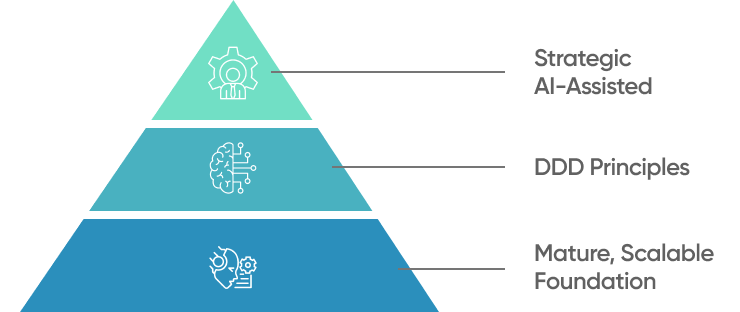
- Mature, Scalable Foundation: Our boilerplate isn't a quick template, it's a meticulously engineered platform built with best practices in software architecture. It’s designed for scalability from day one, ensuring that as your MVP gains traction, the underlying technology can grow with you without requiring costly re-writes. We consider future needs like robust APIs, background job processing, and database performance.
- Product-Minded Engineers Applying DDD Principles: Our developers aren't just coders, they are product-minded engineers. They understand business logic and user needs. By applying Domain-Driven Design principles, we ensure that the software model aligns closely with your business domain, making the custom parts of your application more intuitive, maintainable, and adaptable to future changes. This focus on the "problem domain" means we build what truly matters for your business success.
- Strategic AI-Assisted Development for Custom Parts: While our boilerplate provides the foundation, AI development tools are strategically employed by our experienced engineers to accelerate the creation of your custom features. This isn't about letting AI write the whole application, but about using it as a powerful assistant to generate routine code snippets, suggest optimizations, or help with initial drafts of specific modules under strict human oversight. This boosts efficiency for the unique aspects of your build, complementing the boilerplate's foundational speed.
The boilerplate approach is not a shortcut that compromises quality. It’s a strategy for maximizing value, achieving sustainable speed, and significantly de-risking your MVP launch. By starting with a solid, pre-vetted foundation, you avoid common pitfalls, reduce uncertainty, and gain a crucial competitive edge in the fast-paced 2025 market.
Lower costs, shorter timelines, and a $40k head start
Our boilerplate-based development methodology isn't just a concept, it's a proven system that delivers quantifiable benefits to our clients, starting with what we conservatively estimate as a $40k head start.
How do we arrive at this figure? We've meticulously analyzed the typical development hours required to build common, yet essential, foundational features from scratch to a production-ready standard. These include:
- Secure User Authentication & Authorization: (Signup, login, social logins, password reset, multi-factor authentication readiness, role-based access control) – Estimated 80-120 hours
- User Profile Management: (Editable profiles, settings) – Estimated 20-30 hours
- Basic Admin Dashboard: (User management, basic analytics overview, content moderation tools) – Estimated 60-100 hours
- Subscription Management & Payment Gateway Integration: (Stripe/Paddle integration, plan management, invoicing hooks) – Estimated 50-80 hours
- API Boilerplate & Security: (Secure RESTful or GraphQL endpoints, token management) – Estimated 40-60 hours
- Deployment Setup & Basic CI/CD: (Containerization with Docker, basic deployment scripts for cloud platforms like AWS/Azure/GCP) – Estimated 30-50 hours
- Logging, Error Tracking & Basic Monitoring: (Integration with services like Sentry, basic health checks) – Estimated 20-40 hours
Conservatively, these features alone would take hundreds of hours of design, development, and testing time. At an average blended rate for experienced developers) of, say, $50/hour, this translates to up to $40,000 in direct development costs. Our boilerplate provides these (and more) already built, tested, and refined, giving you immediate MVP development savings, not to mention the invaluable time saved.
Talent + Ready Modules + AI Productivity = Success
- Mature, Experienced Engineers: Our team consists of senior engineers who not only understand how to use the boilerplate but also how to strategically customize and extend it to meet your specific needs without compromising its integrity.
- Strategic Boilerplate Customization: We don't force your idea into a rigid template. The discovery phase is crucial for understanding your unique requirements. We then intelligently adapt and build upon the boilerplate, ensuring the final product is tailored to your vision.
- AI-Powered Productivity: Our software engineers leverage AI coding assistants to accelerate routine coding tasks, freeing them to focus on complex problem-solving and architectural decisions. This targeted AI use amplifies their efficiency.
By leveraging the SoftKraft boilerplate approach, you're not just lowering your MVP costs, you're making a strategic investment in a high-quality foundation that saves you time and money in the long run.
Is a Boilerplate-First MVP Your Strategic Fit?

While a boilerplate-first strategy offers compelling advantages, it's not a one-size-fits-all. Understanding who benefits most can help you determine if it's the right path for your MVP.
This Approach is Perfect For:
- Tech Entrepreneurs with a Clear Vision: You have a well-defined concept and understand the core problem you're solving. You need a substantial, scalable MVP to gain early traction, onboard users, and potentially secure seed funding.
- Startups Looking for an MVP on a Budget: You have a specific budget allocated for your MVP and need to maximize the features and quality delivered within that constraint. You prioritize getting to market relatively quickly without accumulating significant technical debt.
- Founders Who Value a Strong Technical Foundation: You understand that the initial MVP development cost is just the beginning of a longer product development journey. You want a product built on solid architectural principles that can be efficiently scaled and maintained as your user base and feature set grow.
This Approach May Not Be The Ideal Fit For:
- Very Early Ideation Stage (No Defined Scope): If you're still exploring multiple disparate ideas and haven't yet narrowed down to a core concept or target user, buidling an MVP (even boilerplate-based) might be premature. Prototyping tools or design sprints might be more appropriate at this discovery phase.
- Simple, Single-Functionality Websites or Landing Pages: For a basic websites or simple landing pages without complex user interactions or backend logic, a boilerplate might be overkill. Simpler website builders or MVP AI generators could suffice.
- Highly Experimental/Deep Tech MVP: If your core value proposition relies on developing entirely new, experimental technology (e.g., a novel AI algorithm from scratch, groundbreaking biotech software), the primary focus will be on R&D for that core tech. While a boilerplate could handle surrounding application features, the main challenge lies outside what a typical application boilerplate provides.
Understanding this fit ensures you choose a development path that aligns with your specific needs, resources, and the stage of your MVP development in 2025. For many, a boilerplate-first strategy represents the sweet spot between speed, cost, and quality.
The Boilerplate Advantage
This is where a boilerplate approach offers a significant, measurable advantage. By starting with a pre-built, pre-tested foundation that includes many common features, you effectively skip weeks, or even months, of foundational development:
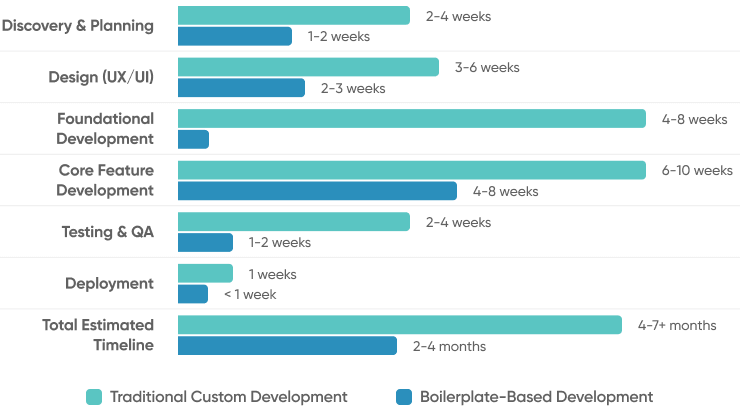
The boilerplate approach isn't just about launching faster, it's about sustainable speed. Because the boilerplate foundation is robust and scalable, you're not cutting corners that will slow you down later. You're building on solid ground, allowing for quicker iterations and feature additions post-launch. In the competitive 2025 market, this accelerated yet sustainable pace can be a game-changer, allowing you to validate your idea, secure funding, or capture market share more rapidly.
Conclusion
For non‑technical founders bringing a digital product to life in 2025, the journey can feel daunting. Budget pressure is real, and no one wants to pour scarce capital into an MVP that misses the mark.
The good news? When you understand the true cost drivers, avoid common pitfalls, and adopt smarter tactics, such as a boilerplate approach, you can launch faster, stay on budget, and preserve long‑term quality.
Save up to 40% on MVP development budget! Our MVP development company combines a $40k+ library of pre-coded modules with AI-assisted coding to launch your product faster. Get a FREE quote for your MVP today!

